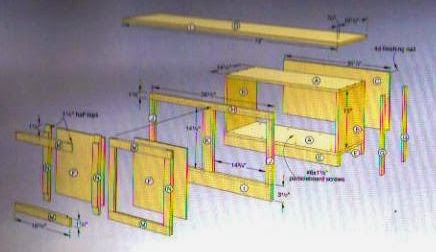Custom-built Units

 A disadvantage in using bookcases, curio cabinets and coffee tables for family museums is space limitation. Clothing or large items cannot be displayed properly. However, these items
A disadvantage in using bookcases, curio cabinets and coffee tables for family museums is space limitation. Clothing or large items cannot be displayed properly. However, these items 
For example, within a thick wall, under a staircase, over a doorway and around windows. Though some pre-made cabinetry can be fitted to look built-in, they are better customized to your specifications by a cabinet-maker or finish carpenter. The prices vary depending on size, materials, complexity of the design, and labor. They are well suited to odd size items that need odd size space and save on valuable floor space.

 Pay close attention to the shelves back wall, where you can hang photographs, plates, even small items of clothing. Styrofoam blocks (found in craft stores) are good for building height. Step-layering shelves adds display space and dimension. By grouping interrelated items together, it makes a cohesive display. Arrange by age (baby) or time (school years) or hobby interests. Cluster a specific collection to tell a story. Just as in a museum, the display conveys an historical era or epoch, allowing the viewer to see a bigger picture of
Pay close attention to the shelves back wall, where you can hang photographs, plates, even small items of clothing. Styrofoam blocks (found in craft stores) are good for building height. Step-layering shelves adds display space and dimension. By grouping interrelated items together, it makes a cohesive display. Arrange by age (baby) or time (school years) or hobby interests. Cluster a specific collection to tell a story. Just as in a museum, the display conveys an historical era or epoch, allowing the viewer to see a bigger picture of  I advise leaving a good portion of space under the top shelf for storage. Install curtains or doors over this area to conceal other items or the remainder of your heirlooms. You don’t have to display everything. One or two of a particular subject matter is sufficient, storing the rest. If you desire to change that display, those other items are in easy reach. The curtain also enhances the museum’s look.
I advise leaving a good portion of space under the top shelf for storage. Install curtains or doors over this area to conceal other items or the remainder of your heirlooms. You don’t have to display everything. One or two of a particular subject matter is sufficient, storing the rest. If you desire to change that display, those other items are in easy reach. The curtain also enhances the museum’s look.
Get the entire family involved with the project. You will be surprised at some of the suggestions they will make. Keep an open mind and Your Family Museum will be fun for everyone.
Next Post: Conservation/Preservation



No comments:
Post a Comment